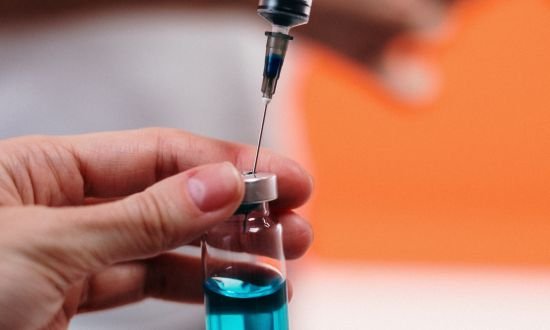In this blog of dog bite disease we will discuss the symptoms, treatment and prevention of this often overlooked health concern. Whether you’re a dog owner, a caregiver, or simply someone who encounters dogs on a regular basis, understanding the risks and knowing how to protect yourself is essential. In this comprehensive guide, we will explore the various diseases that can be transmitted through dog bites including rabies, tetanus and various bacterial infections. Additionally, we will delve into the measures you can take to prevent dog bites altogether, ensuring the safety and well-being of both humans and our furry friends.
Common symptoms of dog bite disease:
Dog bites can lead to a range of symptoms, depending on the specific disease transmitted. It is important to be aware of these symptoms as early detection can lead to prompt treatment and better outcomes. Common symptom experienced after a dog bite are:
- Pain
- Swelling at the site of the wound
- Redness and warmth indicating the presence of infection
- Non healing wound may develop pus or discharge
Some diseases, such as rabies, may have an incubation period before symptoms appear. These can include fever, headache, fatigue, and muscle aches, progressing to more severe symptoms as the disease progresses. It is crucial to seek medical attention if you experience any unusual symptoms after a dog bite, as early intervention can prevent further complications.
Types of dog bite infections:
Various types of infections can be transmitted by dog bite, including bacterial, viral, and fungal. The most common infections caused by dog bite are as under:
- Rabies: Rabies is a fatal disease that affects the brain and nervous system. It is caused by Rabies virus. It can be transmitted through the saliva of an infected animal, typically through a bite.
- Tetanus: Tetanus is caused by the bacteria Clostridium tetani, which can enter the body through deep puncture wounds. This infection affects the nervous system and can cause muscle stiffness and spasms.
- Other bacterial infections: Other bacterial infections that can result from dog bites include Cellulitis, an infection of the skin and underlying tissues and Pasteurellosis, caused by the bacteria Pasteurella multocida. These infections can lead to redness, swelling, and pain at the site of the bite.
Understanding the treatment options for dog bite disease:

Prompt and appropriate treatment is crucial in managing dog bite disease and preventing complications. The specific treatment options will depend on the type of infection and its severity.
- In the case of bacterial infections: Antibiotics are often prescribed to eliminate the infection and prevent its spread.
- For serious infections or those involving deep wounds: Hospitalization and intravenous antibiotics may be necessary. Tetanus immunization is also administered to prevent tetanus infection.
- In the case of rabies: Immediate medical attention is vital, as there is no cure once symptoms manifest. Post-exposure prophylaxis, which includes a series of injections, can prevent the onset of rabies if administered soon after the bite. It is important to follow the recommendations of healthcare professionals and complete the prescribed course of treatment to ensure effective recovery.
Preventing dog bite infections:
Prevention is key when it comes to dog bite infections. Following can be done in this regard:
- Educating yourself and others on proper dog behavior and interactions can go a long way in preventing bites. Always approach dogs cautiously, especially if you are unfamiliar with them.
- Avoid approaching dogs that are displaying signs of aggression or fear, as they may be more likely to bite. When interacting with dogs, be gentle and avoid sudden movements that may startle them.
- It is also important to teach children how to safely interact with dogs and never to approach strange dogs without permission.
- Responsible pet ownership is essential in preventing dog bites. Ensuring that your dog is properly trained and socialized can reduce the risk of aggressive behavior.
- Regular veterinary care, including vaccinations and parasite control, is also crucial in maintaining the overall health and well-being of your dog.
Proper wound care for dog bites:

Proper wound care is essential after a dog bite to prevent infection and promote healing. Following steps should be followed for proper wound care:
- The first step is to clean the wound thoroughly with mild soap and water.
- Avoid using harsh chemicals or antiseptics, as they can further damage the tissue.
- Gently pat the wound dry with a clean towel and apply an antibiotic ointment to prevent infection.
- Wound to be covered with sterile bandage or dressing to prevent contamination.
- It is important to change the bandage regularly and monitor the wound for any signs of infection, such as increased redness, swelling, or discharge.
- If the wound is deep, large, or shows signs of infection, it is important to seek medical attention for proper evaluation and treatment.
7. Seeking medical help for a dog bite:
While some dog bites may be minor and can be managed at home with proper wound care. Situations which warrant immediate medical attention are:
- If the bite is deep, large, or located on the face, hand, or genitals, as these areas are more prone to complications.
- There are signs of infection, such as increasing pain, redness, swelling, or discharge
- If the dog that bit you is unknown or potentially rabid, immediate medical attention is necessary, as rabies is a life-threatening disease. The healthcare provider will assess the wound, clean it thoroughly, and determine the need for further treatment or preventive measures, such as antibiotics or rabies immunization.
Vaccinations for dog bite disease prevention:

Vaccinations play a crucial role in preventing dog bite diseases, both in humans and in dogs. Ensuring that your dog is up to date with vaccinations, including rabies, is not only a legal requirement in many areas but also a responsible measure to protect both your pet and others. It is important to consult with your healthcare provider or veterinarian regarding the appropriate vaccinations for you and your pet, taking into consideration your specific circumstances and location.
Legal implications of dog bites and compensation for victims:
Dog bites can have legal implications, and it is important to be aware of your rights as a victim. Laws regarding dog bites vary by jurisdiction, but in many cases, the owner of the dog may be held responsible for any injuries or damages caused by their pet. Seeking legal advice can help you understand your rights and pursue compensation if necessary.
FAQs
-
What diseases can you get from a dog bite?
Dog bites can transmit diseases like Rabies, Pasteurella and Capnocytophaga.
-
How common are dog bite diseases?
Dog bite diseases are common, with millions seeking medical care annually.
-
What are the symptoms of dog bite disease?
Symptoms include fever, swelling, pain, and discharge at the bite site.
-
How can I prevent dog bite diseases?
Preventive measures include avoiding aggressive dogs and seeking prompt medical care after a bite.
-
What should I do if bitten by a dog?
Clean the wound, apply antiseptic, seek medical help and report the incident to authorities.
Conclusion
In conclusion, understanding dog bite disease is crucial for anyone who interacts with dogs on a regular basis. By recognizing the symptoms, knowing the treatment options, and taking preventive measures, we can reduce the risk of infection and promote the well-being of both humans and dogs. Additionally, promoting responsible pet ownership through training, socialization, and regular veterinary care can help prevent dog bites from occurring in the first place. So let’s be proactive, educate ourselves and others and make a positive impact in preventing dog bite disease.
Disclaimer
Content on this site is written with thorough research and keeping in mind the latest guidelines. However, no content on this site should substitute professional consultation.
